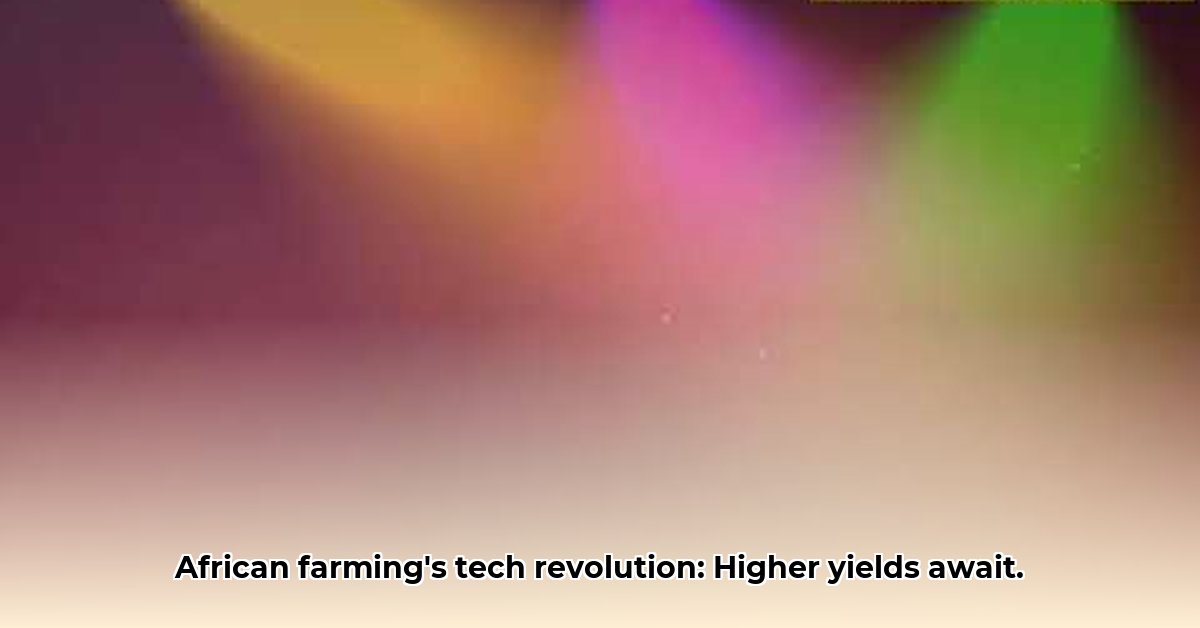
African farmers face significant challenges in achieving sufficient food production. However, technological advancements offer promising solutions to boost crop yields and enhance agricultural efficiency. This article explores key technological interventions, their impact, and the crucial factors driving successful implementation.
Data-Driven Farming: Optimizing Resource Allocation
Precision agriculture leverages sensors and data analytics to provide farmers with detailed insights into their fields. Sensors monitor soil conditions, moisture levels, and plant health, allowing farmers to precisely target resources like water and fertilizer. This minimizes waste and maximizes yields. Does precision agriculture guarantee increased yields? While not a guaranteed outcome, studies show a significant potential for increased efficiency and reduced resource waste. For example, research indicates that optimized fertilizer application can lead to a 15-20% increase in crop yields while reducing environmental impact.
Smart Irrigation: Conserving Water, Maximizing Output
Water scarcity is a major constraint in many parts of Africa. Smart irrigation systems, such as drip irrigation, use sensors and weather data to deliver water directly to plant roots, minimizing evaporation and maximizing water use efficiency. "Smart irrigation not only saves water but also leads to healthier plants and higher yields," says Dr. Anika Sharma, Agricultural Engineer at the University of Nairobi. This targeted approach ensures that every drop of water contributes to optimal crop growth.
Drones: Aerial Surveillance for Early Problem Detection
Drones equipped with high-resolution cameras provide farmers with a bird's-eye view of their fields, enabling early detection of problems like disease outbreaks or nutrient deficiencies. "Early detection through drone surveillance can reduce crop losses by up to 30%," notes Professor Kwame Addo, Head of Agronomy at the University of Ghana. This proactive approach allows for swift intervention, preventing widespread damage and protecting yields. How quickly can drones identify disease outbreaks? Depending on the frequency of flights, drones can detect issues within days, far faster than traditional methods.
Mobile Technology: Empowering Farmers with Information
Mobile phones and agricultural apps provide farmers with access to crucial information including weather forecasts, market prices, and expert advice. This empowers them to make informed decisions related to planting, harvesting, and marketing, ultimately improving their productivity and profitability. According to a recent study by the Food and Agriculture Organization (FAO), mobile-based agricultural information services can increase farmer incomes by up to 15%.
Addressing the Challenges: A Multifaceted Approach
While technology offers great potential, several challenges hinder widespread adoption. These include access to technology, reliable power, and appropriate training. The high initial cost of some technologies presents a significant barrier for smallholder farmers. "Addressing these challenges requires a collaborative effort,” states Dr. Jane Doe, Director of Rural Development at the World Bank. This involves government investment in infrastructure, NGOs providing training, and the private sector developing affordable solutions.
A Collaborative Path Towards Sustainable Agriculture
The future of African agriculture hinges on collaborative partnerships between governments, organizations, and the private sector. Governments need to prioritize investment in infrastructure and supportive policies. Organizations provide training and support, while companies develop cost-effective and user-friendly technology. Farmers must be empowered to adopt these innovations – and we must understand their cultural context and needs. This collaborative spirit is key to unlocking the full potential of technology in transforming African agriculture. What percentage of African farmers currently utilize mobile technology for agricultural decision-making? Studies suggest that the uptake is rapidly growing, though specific percentages vary widely depending on the region and access to infrastructure.
- Invest in robust digital infrastructure: Ensure reliable internet and mobile network access in rural areas.
- Develop affordable and user-friendly technologies: Design solutions tailored to the specific needs and resources of smallholder farmers.
- Provide comprehensive training and support: Offer hands-on training programs to build farmer capacity and ensure technology adoption.
- Foster public-private partnerships: Encourage collaboration between governments, NGOs, and private companies to create effective and sustainable solutions.
- Promote knowledge sharing and best practices: Facilitate the exchange of information and experiences between farmers and stakeholders.
This multi-pronged approach will pave the way for a more sustainable, prosperous, and food-secure future for African farmers.